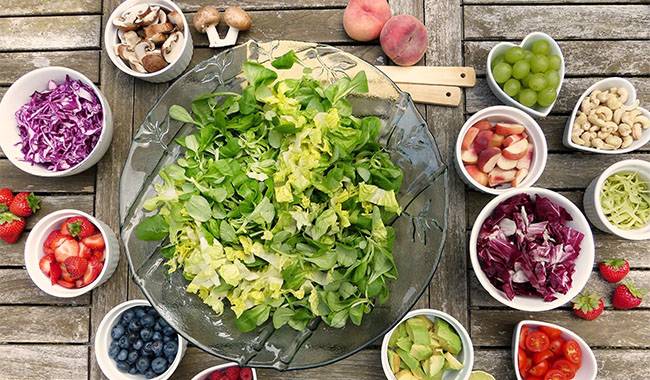
Veganism is a rather vague concept for many people. After all, on the one hand, there is a lot of negativity, myths, jokes, and aggressive propaganda surrounding the word, and on the other hand, there is a concern for one’s diet, humane motivation, and concern for the environment. In this LCN Outdoors article, we will explore the pros and cons of a vegetarian diet, its impact on sports and life, based on research and scientific articles.
What Is A Vegetarian Diet?
Vegetarianism – a diet that does not consume certain animal products.
There are different options for vegetarianism.
- Pesco-vegetarianism (quasi-vegetarianism) – avoiding meat, but eating fish, dairy products, and eggs.
- Ovo vegetarianism – avoid meat, poultry, fish, and seafood, but eat dairy products and eggs.
- Lacto vegetarianism – avoid meat, poultry, fish, seafood, and eggs, but eat dairy products.
Veganism – complete rejection of animal products: meat, poultry, fish, seafood, dairy products, eggs, and honey.
If such diets are motivated by the humane treatment of living beings, they are often accompanied by other ethical stances: avoiding clothes and footwear made from animal fur, using only household chemicals and cosmetics that are not tested on animals and do not contain animal ingredients, and not visiting circuses, zoos, dolphinariums and other entertainment venues that involve the exploitation of animals.
Veganism is not just a matter of nutrition, but also a way of life: choosing food, clothing, household chemicals and cosmetics, and recreational activities that do not use animal ingredients and resources.
The Advantages Of Veganism
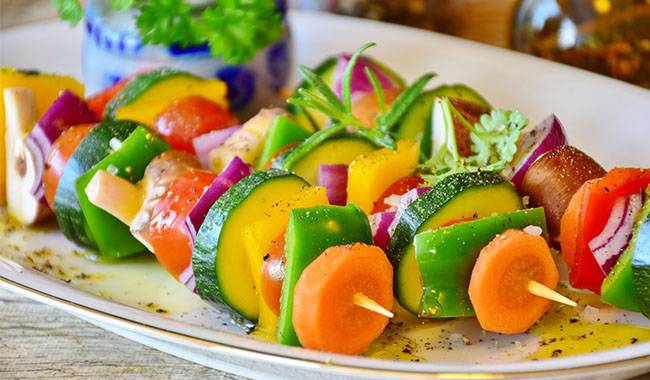
The main advantage of veganism is the addition of vegetables, greens, grains, legumes, seeds, nuts, and fruits to the diet. These foods are rich in fiber, trace elements, and vitamins. In addition, a plant-based diet contains less saturated fat, which is found in meat and dairy products. These dietary changes have led to a number of positive consequences.
A. lower body mass index and body fat mass
Being overweight is a risk factor for many chronic diseases. For example, for the development of coronary heart disease, atherosclerosis, diabetes, cancer, liver and pancreatic disease, osteoarthritis, and a number of other diseases.
The lower BMI of vegetarians may be associated with a higher intake of fiber-rich foods. A child’s diet that includes grains, legumes, vegetables, herbs, and fruits is more effective than an omnivorous diet.
A high intake of saturated fats can also contribute to weight gain. These substances are found in red meat, dairy products, and coconut and palm oils, and are contained in almost all industrial candies and baked goods. In vegetarian diets, especially vegan diets, the intake of these fats is much lower than in omnivorous diets. As a result, the BMI and body fat mass numbers are lower.
Maintaining a normal weight can reduce the risk of many chronic diseases. Studies have shown that vegetarianism helps well in this regard.
B. Reduce total cholesterol and LDL levels
Cholesterol is alcohol that keeps cell membranes stable at different temperatures. It is also necessary for the production of vitamin D, various hormones, and the formation of bile acids. Cholesterol is synthesized in our body from fats, glucose, and amino acids.
Low-density lipoproteins (LDL) are complexes composed of proteins and fats. They have a transport function and carry cholesterol and other substances from the liver to the cells. LDL is formed from fats.
Both cholesterol and LDL play important roles in the life and metabolism of cells. However, if there are too much of these substances in the blood, problems can begin to occur. According to studies, high levels of cholesterol and LDL are associated with a high risk of coronary heart disease, especially myocardial infarction and angina pectoris. This is due to the deposition of these substances in the walls of blood vessels, the formation of plaque, and changes in the elasticity and strength of the walls.
Large amounts of cholesterol and LDL are no longer our friends: they increase the risk of cardiovascular disease. A plant-based diet seems to help lower the blood levels of these substances.
You can lower cholesterol and LDL by reducing your intake of saturated fats – red meat, dairy products, palm oil, and coconut oil – and increasing the amount of vegetables and greens.
Another review of scientific studies shows that the reduction in cholesterol and LDL in a vegetarian diet is due not only to a reduced intake of animal products but also to the action of certain substances in vegetables, greens, grains, legumes, and soy itself. For example, these substances increase the excretion of cholesterol (5, 6), decrease its absorption in the intestine (7, 8), and reduce the synthesis of cholesterol.
C. Reduce the risk of coronary heart disease
Coronary heart disease (CHD) is a general term for several diseases. They are characterized by the impaired blood supply to the heart tissue. IHD includes angina pectoris, myocardial infarction, and its complications and various forms of chronic coronary heart disease, including atherosclerosis. Many studies and systematic analyses (9, 10, 11, 12) have shown that the incidence of CHD is lower in vegetarians than in omnivores.
The reduced CHD risk of vegetarian diets is associated with lower BMI and lower obesity rates, lower cholesterol and LDL levels, and lower blood pressure figures in vegetarians. The reason is still to eat more vegetables, greens, seeds, nuts, and fruits and to reduce saturated fat intake.
D. Reduce the risk of type 2 diabetes
Type 2 diabetes is a disease in which the sensitivity of cells to insulin (a hormone of the pancreas) is impaired. Insulin ensures that glucose is delivered to the cells. In type 2 diabetes, the cells are less sensitive to it. As a result, large amounts of glucose remain floating in the blood instead of being transported by insulin to tissues to provide energy. Diabetes has many complications, from diseases of the reproductive system to blood vessel and nerve damage. For example, a common manifestation of it is the “diabetic foot,” a complex complication that leads to a septic necrotic process in the foot.
The risks of type 2 diabetes include obesity and chronic overeating, old age, smoking, alcohol consumption, high blood pressure, and a sedentary lifestyle. As we have established, a vegetarian diet helps to maintain a normal BMI and weight loss in patients with obesity. This means that the potential risk of diabetes is also reduced.
The high amount of vegetables and low amount of saturated fat in a vegetarian diet may help reduce medication for type 2 diabetes.
If diagnosed with diabetes, a vegetarian diet may also help. This is supported, for example, by the results of a study that divided people with type 2 diabetes into two groups: those on a diet prescribed by the American Diabetes Association and those on a vegetarian diet. Both groups were stable on medication. Patients’ scores were evaluated before the start of the study and after 22 weeks.
Declining glycated hemoglobin, body weight, BMI, waist circumference, cholesterol, and LDL were significantly higher in the vegan diet group. The reduced glycosylated hemoglobin levels helped reduce the dose of diabetes medication.
According to the researchers, lower glycosylated hemoglobin was more associated with reduced energy intake and weight loss. After all, vegetarian diets are high in fiber and low in saturated fat. Reducing saturated fat in the diet also has an impact on increasing cellular sensitivity to insulin, which is a major problem in type 2 diabetes.
A vegetarian diet high in fiber and low in saturated fat reduces the risk of vascular complications in type 2 diabetes because such a diet reduces the body’s cholesterol synthesis, blood cholesterol, and LDL levels.
Here is an interesting study that was published back in 1979. The subjects’ diets were high in fiber and carbohydrates – a major benefit of a vegetarian diet. There was no mention of meat, nor was their intake adjusted in any way. But even these dietary changes helped reduce medication for diabetes.
E. Reduced risk of cancer
Cancer is a malignant tumor that is extremely life-threatening. It is characterized by uncontrolled growth, the ability to invade adjacent tissues, and the appearance of secondary sites in various organs.
A review of the scientific literature (13, 14) suggests that, in general, a vegetarian diet can reduce the risk of cancer.
Data on specific cancers are also available. For example, a British study of vegetarians, Pesco-vegetarianism (eating fish without meat), and non-vegetarians over a 12-year period yielded the following results
- Vegetarians had the lowest risk of bladder, lymphoma, and hematopoietic cancers.
- Quasi-vegetarians, or pescetarians – those who ate fish – had the lowest risk of stomach cancer, ovarian cancer, and the lowest overall incidence of cancer.
- Unfortunately, non-vegetarians had the highest risk of all the cancers studied.
Vegetarians are less likely to develop cancer than omnivores. However, whether a meat-free diet reduces the risk of certain types of cancer is a question that needs further study.
F. Reduce the ecological footprint
Another very important positive for many vegetarians and Pesco-vegetarianism is the reduction of the ecological footprint. This refers to measuring the human impact on the environment in order to produce resources and eliminate waste. Simply put, it is the extent to which we use soil, water, fossils, organisms, and plants for our own sustenance. Every person, organization, company, place, and country has an ecological footprint.
Of all human activities, the food industry is a major consumer of the earth’s resources. It accounts for 20-30% of total anthropogenic greenhouse gas emissions, 70% of all freshwater consumption, and is a major source of water pollution (15). The food industry is a major cause of land-use change and biodiversity loss (16). Without corrective measures, its environmental impact could increase by 50-90% within 30 years, reaching a level where the planet’s resources will no longer be sufficient to produce enough food (17).
In addition to improving agricultural techniques and reducing food loss and waste in the supply chain, there is a third way to reduce the environmental impact of the food industry – by changing individual food choices and people’s overall diets.
The production of animal products, especially meat and dairy products, is resource-intensive and more environmentally intensive than the production of most plant products (18). For example, it takes 18 times less land, 10 times less water, 9 times less fuel, 12 times less fertilizer, and 10 times fewer pesticides to produce 2.2 lbs (1 kg) of protein from beans than it does to produce 2.2 lbs (1 kg) of protein from beef. In addition, producing 2.2 lbs (1 kg) of protein from beef is accompanied by 5-6 times more waste (manure) than 2.2 lbs (1 kg) of protein from chicken and eggs (19).
The motivation to leave a minimal ecological footprint can be seen in the posts and statements of Alex Honnold, a mountaineer, and climber known for his astounding climbs. Alex has remained a vegetarian for about seven years while continuing to amaze the world with his climbs. Watch the Oscar-winning documentary about his Freedom Rider route on El Capitan Mountain in Yosemite National Park.
Meanwhile, Alex Honnold hasn’t turned into an aggressive vegetarian fanatic: “…… Some people would rather eat meat once a week than every day. That shouldn’t be a test of ideological purity. Diet is a spectrum, and it’s better to do less harm than more harm.”
Alex Honnold’s physical form is admirable. It is an example of how “on a plant” you too can progress in your athletic performance and successfully develop your body. – Alex Honnold
Disadvantages Of Vegetarianism
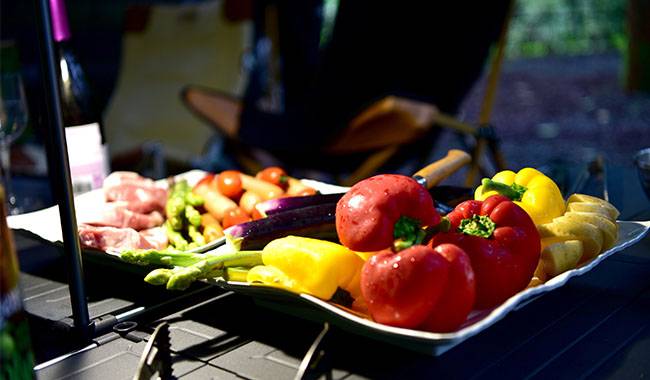
Veganism is a diet that requires you to work hard, especially at the beginning of the journey. You need to make sure your diet is as diverse as possible, including grains, legumes, vegetables, herbs, nuts, and seeds. By simply removing meat from your regular diet, you run the risk of missing out on some important elements. The most common are protein, iron, vitamin B12, calcium, zinc, iodine, Omega-3 fatty acids, and vitamin D.
A. Risk of Protein Deficiency
Animal proteins have an advantage over plant proteins in two ways: absorption by the body and coagulation. Amino acids
Various plant proteins are deficient in certain essential amino acids. The solution: diversify your diet. By consuming different sources of plant protein, you can obtain a complete set of amino acids. For example, alternate legumes as a side dish: lentils, chickpeas, beans, peas, green beans. Various seeds can be added to salads: sesame seeds, sunflower seeds, pumpkin seeds, flax seeds, chia seeds. Nuts can be a nutritious snack: almonds, walnuts, cashews, hazelnuts, peanuts, and others. It is recommended to buy dried nuts, not roasted and unsalted, to get more micronutrients.
Another limitation of plant proteins is their low digestibility in our bodies. This is due to the presence of various substances in legumes and grains that interfere with the digestion of proteins.
The solution to the problem: The impact of factors that hinder the absorption of plant proteins can be reduced by using different preparation methods. For example, soaking beans for several hours before cooking will not only improve the digestibility of the protein but also reduce the effect of gas formation in the body after eating them. Also, try soaking nuts in water for at least 10-15 minutes and you will be surprised how much tastier they become. Another way to increase the absorption of plant protein is by sprouting. You can do this yourself or buy ready-made sprouts at the store. You can sprout chickpeas, mung beans, soybeans, peas, lentils, legumes, wheat, buckwheat, rye, oats, barley, and spelled. Make sure the legumes or grains are unsteamed and whole, not chopped, such as cooked peas. Sprouts can be sprouted in a regular bowl for a few days. Add sprouts to salads, Asian soups, and serve as a separate dish.
B. Risk of iron deficiency
Why exactly is it so important to us? In addition to its various functions in the body, iron is part of hemoglobin, the protein responsible for transporting oxygen from the lungs to the cells. Hemoglobin is found in red blood cells – red blood cells.
If there is not enough iron – for example, if there is not enough iron in food or if the intestines do not absorb enough iron – iron deficiency anemia can occur. This is a decrease in the number of red blood cells and hemoglobin in the red blood cells. Anemia can lead to constant fatigue, rapid fatigue, weakness, shortness of breath, and decreased exercise endurance.
Curiously, vegetarians consume the same amount of iron as omnivores, but are more likely to be at risk for iron deficiency. Here’s why: The main source of iron in a vegetarian diet is in a form that is more difficult to absorb than animal products. For example, the body may not notice the iron in spinach, but will absorb almost all of it from beef. Plus grains and legumes contain phytates, which interfere with the absorption of iron in the intestine.
The solution: Combining iron from plant sources with vitamin C can increase the absorption of iron. For example, toss a spinach salad with lemon juice and add fresh parsley or cilantro to lentils. And to reduce the effects of phytates, you can soak beans and grains before cooking.
Plant sources of iron.
- Legumes: lentils, soybeans, peas, beans, chickpeas, green beans.
- Grains: buckwheat, barley, wheat and other grains artificially fortified with iron.
- Green leafy vegetables.
- Broccoli.
- Seaweed.
- Seeds: pumpkin seeds, sesame seeds, sunflower seeds.
- Nuts: pine nuts, almonds, hazelnuts, walnuts, peanuts.
- Whole wheat bread.
- Some dried fruits: apricots, plums, sultanas.
It is recommended to check the iron status of a vegetarian diet every six months by performing a general blood test – looking at the number of red blood cells and hemoglobin in it – and a blood test for ferritin levels. Ferritin is a protein complex that acts as an intracellular iron store.
In some cases, such as when you have a tendency to be iron deficient or when women lose a lot of blood during menstruation, you may need to take iron supplements. This should be discussed with your doctor.
C. Risk of vitamin B12 deficiency
Vitamin B12 is essential for the proper functioning of the nervous system and the synthesis of DNA, especially in red blood cells. After chronic intake of insufficient B12, its reserves can be depleted. This leads to disorders of the nervous system, abnormal changes in blood cells and impaired hematopoiesis – megaloblastic anemia. The symptoms are tingling and numbness in the fingertips; in severe B12 deficiency, weakness, fatigue, lack of concentration, headache, dizziness, tachycardia and dyspnea, and pale skin and mucous membranes.
Vitamin B12 cannot be synthesized in the body and must be consumed from food. And, unfortunately for vegetarians, it is only found in animal products – meat, fish and dairy products.
The solution: eat foods artificially fortified with vitamin B12. This information can be found on the package, both on the front and in the contents. If you are a strict vegetarian or vegan, it is highly recommended to take vitamin B12 supplements, as getting the necessary amount (2-6 mcg/day) from fortified foods becomes difficult.
To determine your health and nutritional status, you can monitor your vitamin B12 status through blood tests every six months. It is highly recommended that vegetarians take vitamin B12 supplements.
D. Risk of calcium deficiency
Calcium is essential for blood clotting, nerve transmission, muscle stimulation, vitamin D metabolism, and maintenance of the bone structure. Calcium deficiency is fraught with the risk of fracture, bleeding, neurological disorders, and muscle contraction.
Of all vegetarians, vegans have the highest risk of calcium deficiency. This is because dairy products such as cheese, milk, cottage cheese, yogurt, and fermented baked milk contain the most calcium.
Solution: Calcium is also found in legumes – soy, chickpeas, green beans, mung beans; nuts – almonds, hazelnuts, pistachios; seeds – sesame seeds, sunflowers; herbs – parsley, dill, basil; green leafy vegetables – spinach, watercress, rutabaga; vegetables – broccoli; soy cheese – tofu. In addition, there are foods that have been artificially fortified with calcium. For example, nut milk.
You should also monitor your calcium intake through blood tests. If necessary, you should work with your doctor to decide whether to take nutritional supplements.
Examples of calcium-containing vegetarian dishes – vegetable and chickpea stew, sprinkled with fresh cilantro and sesame seeds before serving.
E. Risk of zinc deficiency
Zinc is necessary for many vital functions of the body: DNA formation, carbon dioxide extraction, immune function, formation of hormones such as insulin and testosterone, metabolism of vitamin E, and protein synthesis. Deficiency may lead to more frequent infections, slower wound healing, decreased appetite, increased hair loss, anemia, and visual impairment.
So, why are vegetarians at risk of inadequate zinc intake?
The most easily absorbed forms of zinc are found in meat and fish. And plant sources – legumes, grains, nuts, seeds, and green leafy vegetables – contain phytates, which inhibit their absorption in the intestine. We’ve already met them in the chapter on iron.
The solution: As with iron, soaking and sprouting can help. These methods reduce the phytate content of beans, grains, and nuts and help the body absorb more zinc.
The amount of zinc in the body can be monitored by blood tests as well as previous indicators. If necessary, work with your doctor to decide whether to take supplements. Because of zinc absorption problems, it is recommended that zinc supplements be taken separately from other supplements and not as part of a multivitamin.
You can also sprout beans and some grains. The seeds must be whole and not steamed. Sprouts can be added to salads and soups.
F. Risk of iodine deficiency
Iodine is part of the thyroid hormones that affect growth, physical and mental development, and metabolism in the body. Iodine deficiency can lead to various abnormalities of the thyroid gland, as well as impaired fertility, such as premature births or stillbirths.
Why are vegetarians at risk of iodine deficiency?
The main sources of iodine are fish, seafood, eggs, and dairy products. In other words, sand, lactobacilli, and vegetarians are at non-critical risk of not getting enough of this element. The solution for vegetarians: seaweed. But don’t overdo it: 100 grams of seaweed contains almost the daily dose of iodine.
Another source of iodine for everyone is iodized salt. But still, don’t get carried away: too much salt in the diet increases the risk of hypertension and kidney disease. Seaweed is rich in iodine. 100 grams is enough to get a daily dose of this element.
G. Risk of Omega-3 fatty acid deficiency
Omega-3 fatty acids are essential for cell growth and division, cardiovascular health, and brain function. Omega-3 deficiency increases the risk of blood vessel damage and coronary heart disease, possible learning disabilities, and dermatitis – an inflammatory skin disease.
Why are vegetarians at risk of Omega-3 fatty acid deficiency?
Omega-3 cannot be fully synthesized by the body and must be consumed with food. However, fish and seafood are their main sources. Therefore, only Pesco-vegetarianism is left without the risk of under-consumption.
Solution: There are foods that contain a substance that helps the body synthesize Omega-3. These include flaxseed, chia seeds, walnuts, soy and mustard oil, flaxseed, hemp, and canola oil. It doesn’t hurt to supplement with Omega-3. If this is important to your vegan regime, look at the package to see if it comes from seaweed, not fish.
Flaxseed, chia seeds, walnuts, soybeans, as well as mustard oil, flaxseed oil, hemp, and canola oil can help your body build up Omega-3 fatty acids.
H. Risk of vitamin D deficiency
Vitamin D is a fat-soluble vitamin produced by sunlight in the skin. It is essential for calcium absorption and bone health and plays an important role in many physiological processes. Low vitamin D levels have a negative impact on musculoskeletal function and muscle strength.
Why are vegetarians at risk for vitamin D deficiency?
All people living in the central and northern parts of the country are at risk for vitamin D deficiency during the winter months due to low amounts of sunlight. The good. After all, there are also food sources of it – oily fish, cod liver. Here we go again, another vegetarian on the sand!
Solution for vegetarians: Especially for those who live in the center and north, take a vitamin D supplement in the winter. again, pay attention to the information on the package that it comes from a plant source, not from fish. To determine your vitamin D status, you can have a blood test for 25-hydroxycalciferol (25OHD). This is the name of one of the forms of vitamin D present in the body. Based on these results, your doctor will be able to prescribe a supplemental dose.
Pesco-vegetarianism, which does not eat fish, is recommended to take a vitamin D supplement in the winter when the amount of sunlight is extremely low.
Vegetarianism and Exercise
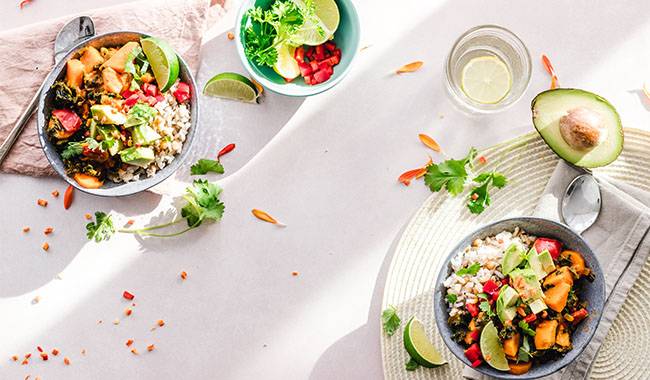
So that there is not a lack of evidence for the compatibility of vegetarianism and exercise, here are some study results and a systematic review of the scientific literature.
Study 1. exercise capacity of omnivores, Lacto vegetarianism, and vegetarians running recreationally
How many subjects: omnivores – 26, ovolacto-vegetarians – 26, vegetarians – 24.
Duration of vegetarianism: from six months.
Type of exercise in the study: bicycle ergometer to voluntary exhaustion.
Results.” Omnivores, ovolacto-vegetarians, and vegetarians showed no significant differences in maximal exercise capacity …… This suggests that the diets evaluated did not adversely affect the exercise performance of amateur runners. There were no differences in exercise capacity between vegetarians, ovolacto-vegetarians, and omnivorous amateur runners.”
Study 2. nutrition of vegetarians and omnivores – comparing physical performance
Conclusion.” …… When comparing physical performance, no significant differences were found between vegetarian and omnivorous mixed diets. A predominantly vegetarian diet neither improved nor decreased the performance of the athletes ……”.
Study 3. Plant-based diets: considerations of environmental impact, protein quality, and exercise performance
Conclusions.” …… Despite differences in macronutrient and micronutrient intake between vegetarians and omnivores …… on multiple measures and activities, there appeared to be no differences in exercise performance between the diet groups.”
Study 4. differences in cardiorespiratory fitness and peak torque between vegetarian and omnivore endurance athletes: a cross-sectional study
How many subjects: omnivores – 43, vegetarians – 27 (15 vegetarians and 12 ovolacto-vegetarians).
Duration of vegetarianism: 24 subjects were vegetarian for more than 2 years, the remaining 3 subjects were vegetarian for 3, 6, and 11 months.
Type of loading in the study: treadmill and a series of leg extensions and bends performed on a Humac Norm equivalent ergometer.
Results.” …… The results of this study showed that vegetarian endurance athletes had higher cardiorespiratory fitness (measured VO2max – maximum oxygen consumption during exercise) than omnivorous athletes, but there was no difference in peak torque (force exerted by bending and releasing the leg) between the diet groups. These findings suggest that a vegetarian diet does not affect performance, but may promote aerobic capacity in athletes.”
The short conclusion is that a good vegetarian diet has no effect on athletic performance. It doesn’t make them worse, but it doesn’t improve them either.
A well-designed vegetarian diet does not hinder athletic performance. However, vegetarians also have no particular advantage over omnivores.
In contrast, a bit of personal history from the author.
“In 2011, I gave up meat and fish for humane reasons. That didn’t stop me at all from pursuing my hobbies – rock climbing, hiking, running, zip-lining, and other joys of an active lifestyle. I was inspired to try new foods and cook a lot. My health indicators are normal. There were times in the summer when I tried a strict vegan diet, but when the cold weather arrived, I went back to dairy and eggs.
Sometime in 2018, the motivation to follow a vegan diet began to fade. Work issues and other life changes took the focus off of physical health. I started doing fewer grains and legumes and gave up the variety in my diet. And at the end of 2019, I was also shocked by blood tests that I hadn’t had in a while: decreased hemoglobin and red blood cells, and a small amount of ferritin. Well, this is what I had earlier in the mountains, 3 miles (5 km) or more, harder than usual. And for a year I didn’t restrict myself to meat and fish, I ate a lot of salads and nuts. My last two blood tests made me happy. What conclusions and ideas have accumulated during this year.
- It’s good to be a vegetarian if you have the motivation and strength to work on your diet and maintain variety. Have I eaten lentils this week? How about walnuts? How about green leafy vegetables?
- There is no need for everyone to be a strict vegetarian. Even 1 day a week without meat is already good for the body and the environment. Or regular “meatless days” – regimen can be whatever is convenient for the individual.
- And don’t “shame” your neighbor: “You call yourself a vegetarian!” – If he suddenly allows himself to eat chicken breasts.
There are no rules. The world around us has health and benefits.
The Layout Of The Day’s Vegetarian Camping
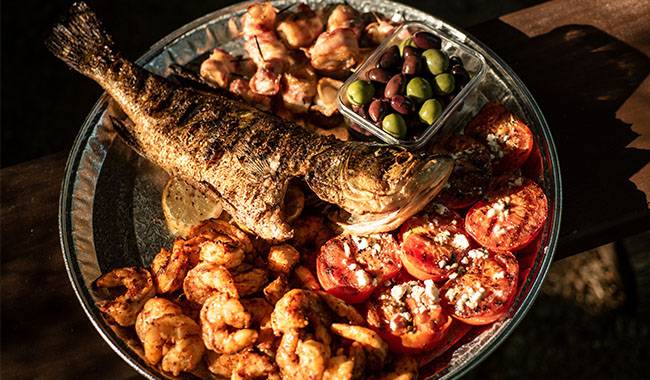
As for dessert, an example of a vegetarian camping meal of the day.
Breakfast options.
- water, raisins, nuts on oatmeal.
- bread, cheese, 2 dates.
Snack options.
- cereal.
- a handful of nuts and dried fruits.
- energy gel.
- Gozinakis.
Lunch options.
- buckwheat mushrooms;
- macaroni and cheese with tomato sauce.
- couscous.
- lentils with dried herbs.
Dinner choices.
- doshirak (why not?) ;
- mashed potatoes diluted with boiling water and canned beans.
- secret salad if you are planning to bring canned food on a hike: peas, corn, and rye bread cubes, mayonnaise will be added in special cases.
- pasta with beans and meat, soaked for 10-15 minutes before cooking.
Well, you now have enough information to decide for yourself vegetarianism. Good luck with your sport and good nutrition!
You can learn more about building a diet and adapting it to your physical activity through the lectures on our YouTube channel.